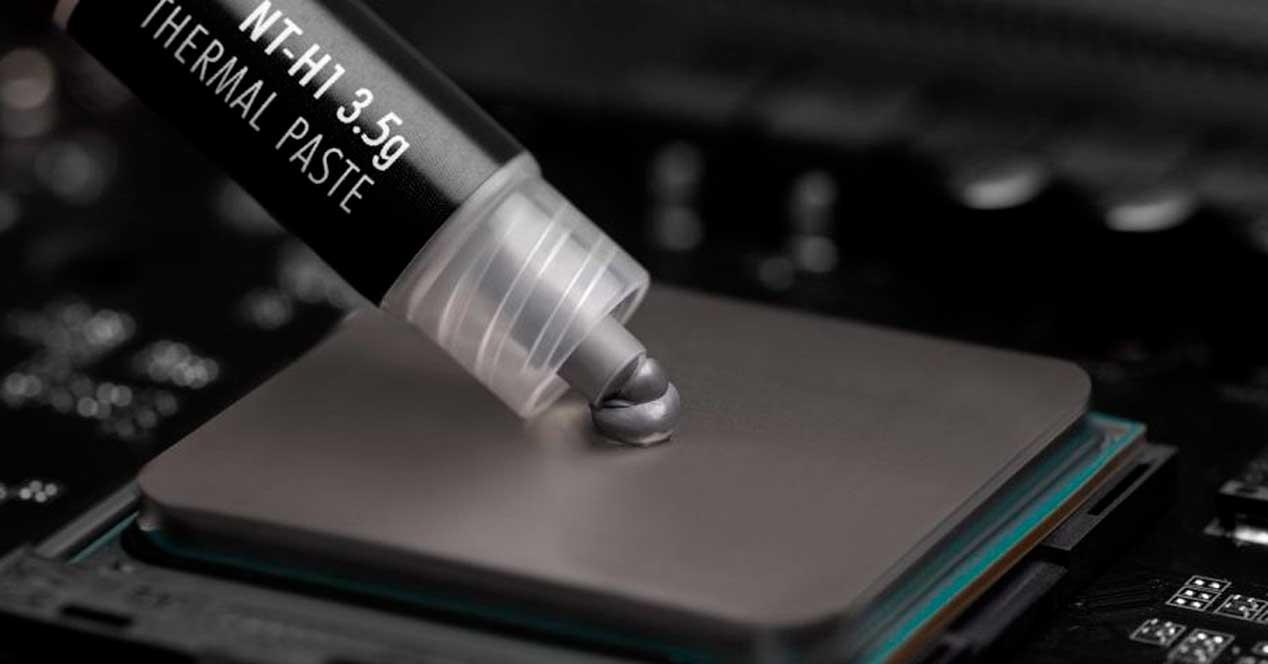As Jarabe de Palo said: it depends. There is no single answer, there are different scenarios and you need to consider them carefully because what seems obvious and simple really isn’t, and there is always a common key factor.
Changing thermal paste in summer: a dubious practice?
Yes, it is doubtful, because we are not talking about cleaning the heatsink or the radiator as such, but simply an outright change of paste. We therefore hope to gain in thermal performance with, that is to say, less temperature in our components, but is this really the case? Let’s see this by scenarios.
Mature thermal paste and no PC or heatsink cleaning
In this case, the thermal paste is probably already hardened by thermal changes and cycles, the zero humidity that normally exists inside a PC tower and of course the dust particles that come from everywhere towards the heatsink and which makes everything worse.
In this case it is the only one that we really recommend changing the thermal paste now when summer arrives, mainly because we will see a benefit even if there is no cleaning of the PC in general . The breaks in thermal bridges between the IHS and the cold plate they will be huge and a change and refresh of the pasta will close them up improving the heat transfer between them.
Pasta changed less than a year ago
In this case, and if the application was correct, a change would not really be necessary next summer. Another thing is that we buy a better one and want to try it out, which is a separate case, but if it’s a year old or a bit older, there’s really no need to take it apart and fix it. change, maybe a general cleaning would help deal with the high temperatures that lie ahead.
The reason for this refusal is that the paste is consolidated. Thermally and mechanically speaking, it is regulated, the microbubbles generated by temperature changes have been expelled, its distribution will be as perfect as possible and therefore the performance, since its thermal capacity and viscosity are still in force, will be ideal, will not being able to help with the mentioned cleaning.
We don’t know how the thermal paste is or when we put it on
In this case, we can only guide ourselves between the delta of a cold day with low ambient temperatures and a hot day in terms of what the CPU and GPU mark as such. If he delta is above 40º C
Temperature reading software such as Core Temperature or GPU-Z will help you in this task. If we approach or exceed 80º C, the change is mandatory and if we have a cooling system of questionable quality, it is time to do a two for one.
Beware of opening graphics cards under warranty, most manufacturers do not accept RMA after breaking the sticker on one of the screws, except for EVGA. This is not always fulfilled, however, one can find manufacturers who understand the situation and do not object, but this is by no means the rule to follow. In these cases it is necessary to increase the cooling of the box by means of a correct flow system in the same or better/more fans.
Table of Contents










